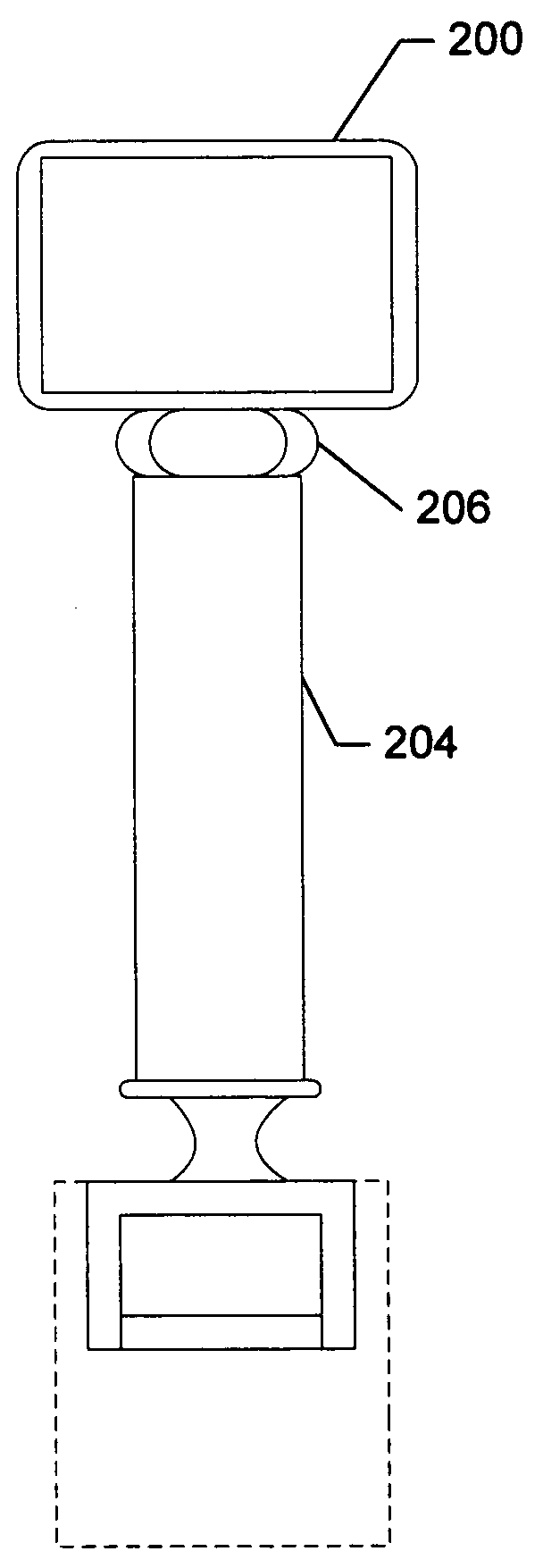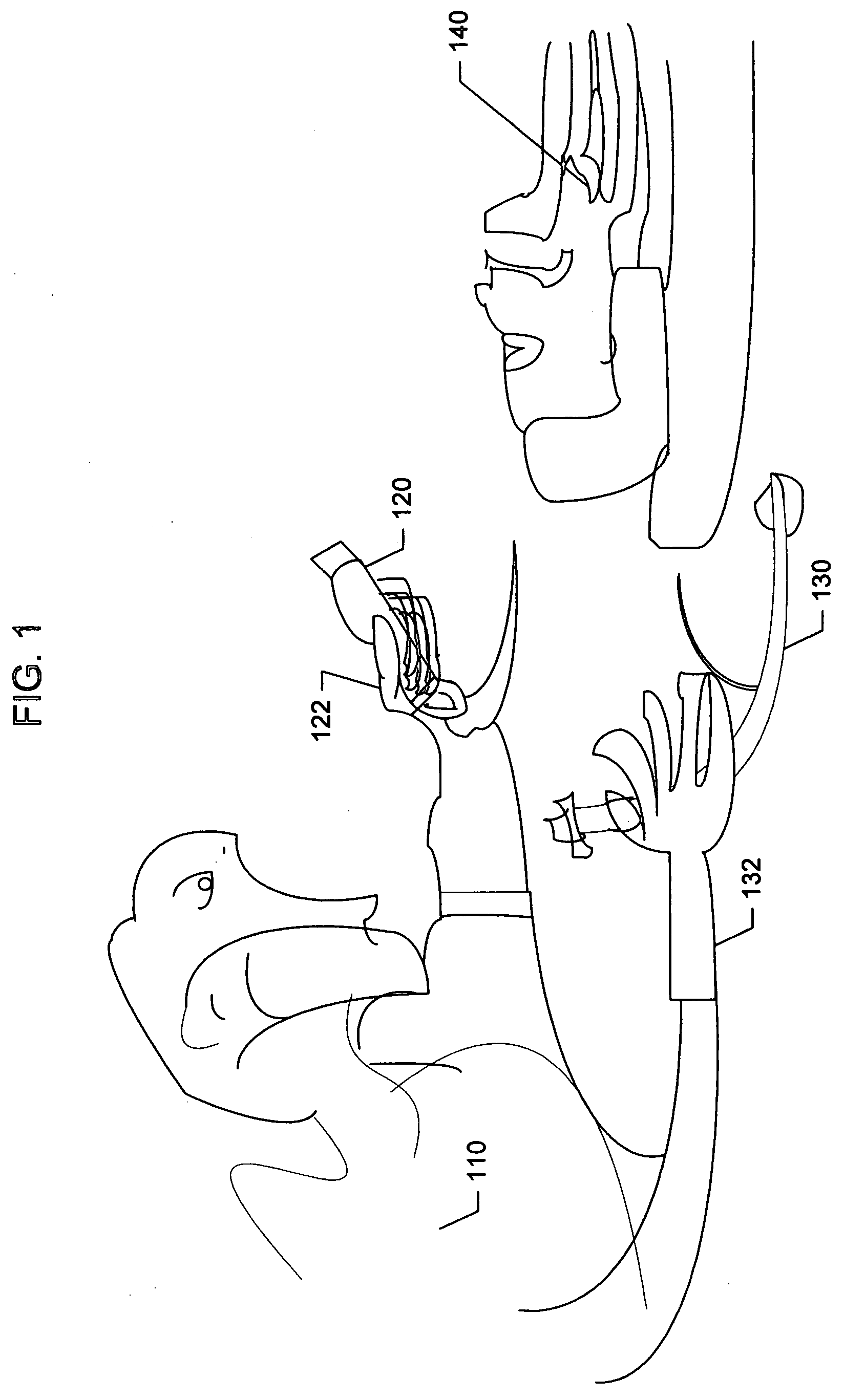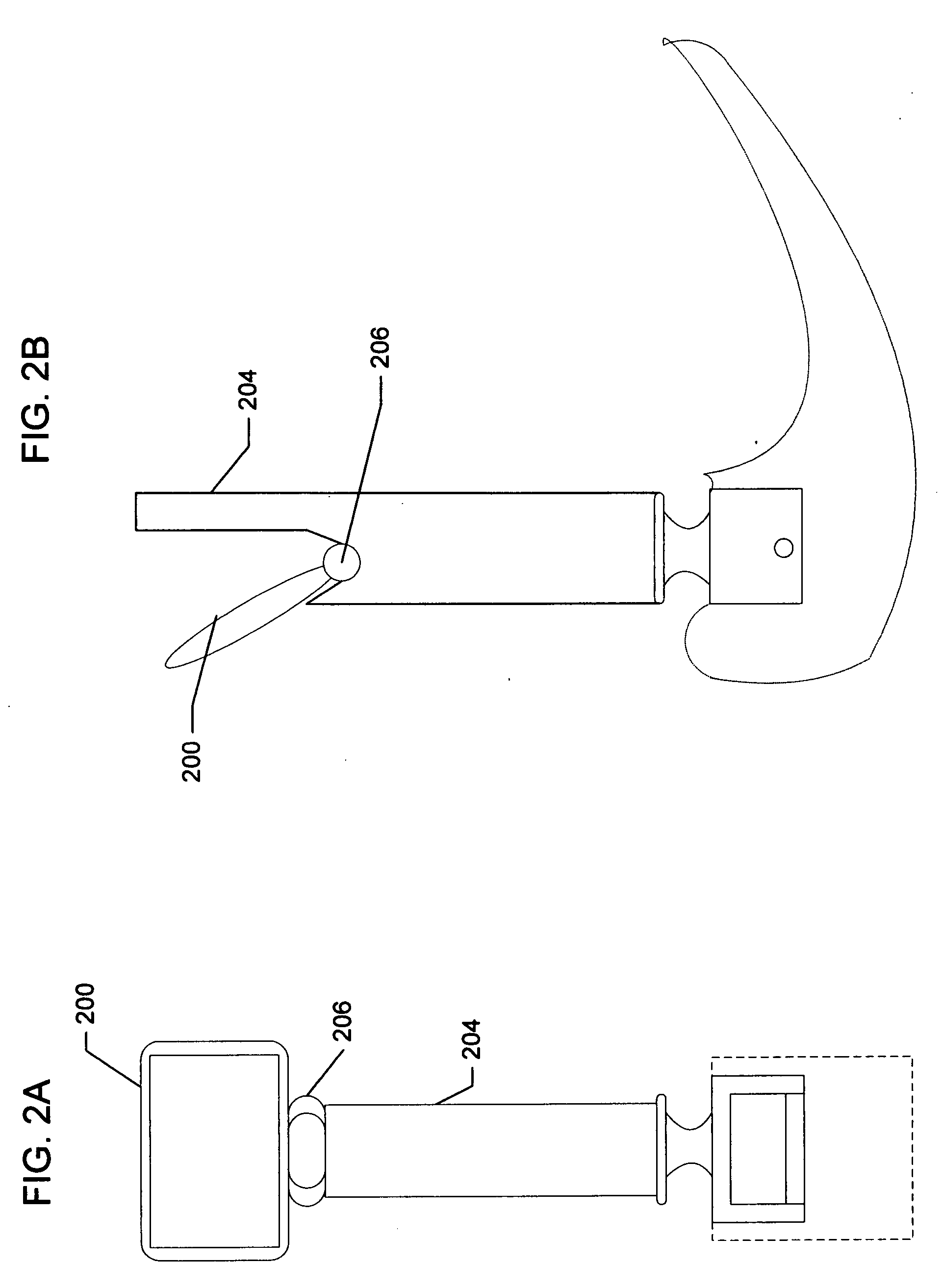Apparatus and method for imaging-assisted intubation using pre-existing practitioner skill set
a technology of pre-existing skills and apparatus, applied in the field of apparatus and method for imaging-assisted intubation using pre-existing skills of practitioners, can solve the problems of inability to see around soft tissues that obstruct the needed view, lack of direct visualization of the larynx, and insufficient vocal cord visualization of the laryngoscope. to achieve the effect of facilitating indirect visualization
- Summary
- Abstract
- Description
- Claims
- Application Information
AI Technical Summary
Benefits of technology
Problems solved by technology
Method used
Image
Examples
Embodiment Construction
[0024]The description above and below and the drawings of the present document refer to examples of currently preferred embodiments of the present invention and also describe some exemplary optional features and / or alternative embodiments. It will be understood that the embodiments referred to are for the purpose of illustration and are not intended to limit the invention specifically to those embodiments. For example, preferred features are, in general, not to be interpreted as necessary features. On the contrary, the invention is intended to cover alternatives, variations, modifications and equivalents and anything that is included within the spirit and scope of the invention.
[0025]Some embodiments of the present invention seek to avoid at least some of the deficiencies of the existing alternative equipment and techniques. The deficiencies, for example, may include but are not limited to one or more of: (1) requiring the presence of certain unwieldy equipment of a type not normall...
PUM
 Login to View More
Login to View More Abstract
Description
Claims
Application Information
 Login to View More
Login to View More - R&D
- Intellectual Property
- Life Sciences
- Materials
- Tech Scout
- Unparalleled Data Quality
- Higher Quality Content
- 60% Fewer Hallucinations
Browse by: Latest US Patents, China's latest patents, Technical Efficacy Thesaurus, Application Domain, Technology Topic, Popular Technical Reports.
© 2025 PatSnap. All rights reserved.Legal|Privacy policy|Modern Slavery Act Transparency Statement|Sitemap|About US| Contact US: help@patsnap.com



